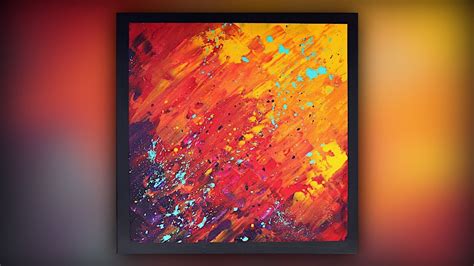
How to Choose Colors in Abstract Painting: Tips for Beginners and Professionals
Choosing the right colors is one of the most important steps in abstract painting. Unlike representational art, where colors often reflect reality, in abstraction, color itself becomes the subject. The right combination can evoke emotion, create harmony, or energize a composition. This guide will help both beginners and experienced artists make intentional, expressive color choices.
1. Start with an Emotion or Concept
- Decide what feeling you want to convey: calm, excitement, melancholy, joy, or tension.
-
Use color psychology to guide your choices:
- Red = energy, passion
- Blue = calm, spirituality
- Yellow = optimism, joy
- Green = balance, renewal
2. Understand Color Relationships
- Complementary colors (opposite on the color wheel, e.g., red & green) create contrast and tension.
- Analogous colors (next to each other, e.g., blue & purple) create harmony and unity.
- Triadic schemes (three evenly spaced colors, e.g., red, yellow, blue) provide balance and vibrancy.
3. Consider Value and Intensity
- Value: Light vs. dark colors can create depth and focus.
- Saturation/Intensity: Bright colors energize, muted tones calm.
- Layering different values and intensities adds complexity and richness.
4. Experiment with Scale
- Large color fields dominate the composition and create immersive experiences.
- Small color accents can act as focal points or rhythmic punctuation.
5. Layer and Blend
- Layering translucent colors allows for subtle interactions and new shades.
- Blending edges or gradients can create smooth transitions, while sharp edges emphasize structure.
6. Trust Your Intuition
- Abstract art allows freedom—sometimes the most powerful color combinations are discovered intuitively.
- Step back frequently to see how colors interact as a whole.
- Don’t be afraid to remove or add colors until the composition feels right.
7. Use Tools and Mediums to Explore
- Brushes for controlled application.
- Palette knives for texture and blending.
- Sponges or pouring techniques for spontaneity.
- Digital tools for experimenting without committing to canvas.
Conclusion
Choosing colors in abstract painting is both a science and an art. By combining knowledge of color theory with intuition and experimentation, artists can create compositions that resonate emotionally and visually. Whether you’re painting bold, contrasting fields or subtle, meditative layers, understanding how to work with color will transform your abstract art.
Inspired by the pioneers of abstract art, my collection brings bold color, texture, and emotion to life. Each piece is designed to spark personal reflection and invite viewers into a unique visual experience.
https://emotionincolor.com/collections/original
